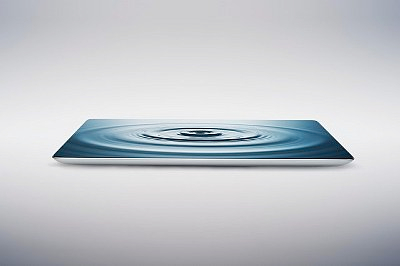
Reports of the tablet’s death have been greatly exaggerated — Mark Twain didn’t say that. But a number of experts, market analysts, researchers and businessmen have been cheerfully dousing the industry’s prospects with petrol while looking for a match.
They claim the same: the tablet is soon to be no more. But could this really be the end? Or will the device that transfixed the world only six years ago rise from the ashes to reinvent itself?
Much of the fuel for these claims comes from recent figures released by tech research analysis firms IDC and Canalys on February 2 — global tablet shipments had decreased by 3.2 per cent to 76.1 million and by 12 per cent to 67 million year-on-year for the fourth quarter of 2014 respectively. The difference is down to semantics — Canalys didn’t include hybrid laptop-tablets in its study.
However, market research analysts Strategy Analytics (SA) presented a different scenario, reporting that 78.3 million tablets (not counting hybrids) had been shipped the fourth quarter of 2014, and that this represented a 1 per cent year-on-year increase.
The beginning
Turn the clock back to late 2009. Rumours had been swirling about a portable touchscreen computer in the works at Apple, which had enjoyed unprecedented success from the iPhone released in 2007. Then, on January 27, 2010, Steve Jobs told the world that the iPad “creates and defines an entirely new category of devices that will connect users with their apps and content in a much more intimate, intuitive and fun way than ever before”.
He wasn’t wrong. The device sold three million units in just 80 days, 300,000 of which flew off the shelves on the day it was released. Five years and five iPads later, the device is still going strong, although it doesn’t quite enjoy the same hegemony as those heady days of 2010-12.
And late last year came the massive (for Apple) iPhone 6 Plus, which smashed sales records and marked the moment the company finally, ahem, bent to the market’s will with its own phablet.
So, what next for the Cupertino-based cult? The hype train is gathering steam for its iPad Pro, rumoured to feature a 12- to 13-inch ultra-high resolution display and an A8X processor, which is reportedly 55 per cent faster than the A8 found in the iPhone 6. One of the drawbacks of the iPad that rival Samsung took advantage of with last year’s Galaxy Pro tablets is a lack of split-screen multitasking. Apple is set to deal with this, empowering both the Air 2 and Pro to support the function. It’s also bringing its Mac OSX and iOS closer together.
Taking note
Meanwhile, Samsung has been rolling out model after model of successively larger and more advanced phablets — it feels like yesterday when we were being told the S5 will change the game, before the South Korean giant asked us “Do you note?” upon release of the Galaxy Note 4. Evidently, we weren’t noting enough because shortly afterwards came the Note Edge (see p.4). As for tablets, last year’s Pro series performed decently, with the S-pen stylus working well on-screen for quick note-taking. The integration of Samsung’s devices and its TVs is also going from strength to strength.
Regional rival Sony pushed out its Z1, Z2 and Z3 device families last year, each of which included a tablet. The last one gained great plaudits for providing a completely waterproof screen in a thin, lightweight package. The Z3 tablet also features something no other tablet can boast — users can stream their PS4 games on screen, with the console handling the processing. This is becoming an area of great interest for tablet-makers.
Nvidia, too, is batting its eyelids at gamers with its Shield Tablet, which the company claims has an “impossibly advanced” processor that allows you to seamlessly stream titles from your PC in full HD. The brand also has its own game-centred app store, the Shield Hub, providing a library of Nvidia-exclusive titles (see p.4).
As for Microsoft, its hybrid Surface Pro 3 didn’t quite fly high enough to dent the Apple-Android duopoly but with sales of more than one million units, it didn’t come crashing either. The upcoming Surface Pro 4 is set to further blur the lines between the tablet and laptop with a fully functional Windows 10 OS — you can install the same programs as on any Windows PC, according to reports. As Microsoft’s Office software is still ubiquitous, the key to the Pro 4’s fortunes will boil down to how business-friendly it is. We haven’t yet reached a point where white-collar workers walk down the halls with iPads and Tabs, but perhaps the Pro could change this. In any case, it would be madness for Microsoft to attempt to take on Apple and Samsung in the lifestyle space.
Dying? Not really...
So while tablet shipments may have tailed off towards the end of last year, there is no reason to think the category is dying. There’s always going to be demand for large-screen touch devices — they’re better than a smartphone and phablet for videos, gaming, reading, typing and pretty much everything aside from calls, portability and photography. However, the industry is going through a period of consolidation and it is clear that some brands will suffer in the process.
Companies are now trying to link tablet devices to their traditional strength areas. You can see it with Apple and the gamut of iCloud services that allow virtually seamless transitioning between TVs, phones, laptops, desktops and tablets. Sony and Nvidia have enjoyed two decades of success with gaming consoles and components respectively, and are incorporating this expertise into their tablets. Microsoft recently released Office on iOS and Android and will no doubt be looking for ways to make professional consumers turn to the upcoming Surface Pro 4.
For a tablet to thrive, jamming in more RAM is no longer key. Instead, if a brand can turn back to the things that helped build it in the first place and integrate these into a device that performs well, with reasonable battery life, weight and a good display, the tablet segment could hit even greater heights than it did before.












